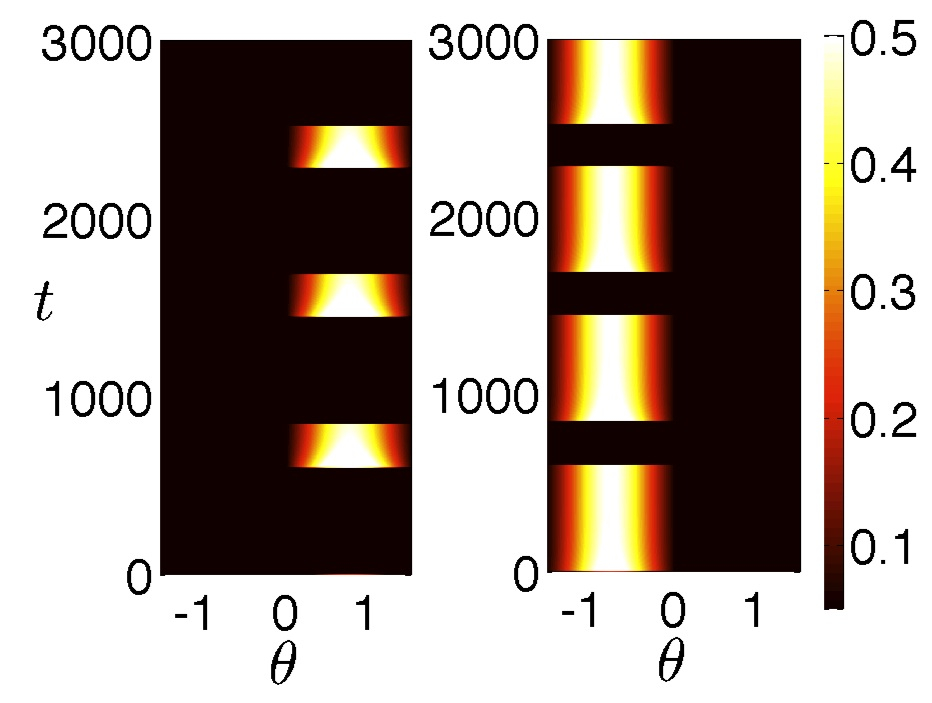Binocular rivalry in a competitive neural network with synaptic depression.
 Binocular rivalry in a competitive neural network with synaptic depression.
Binocular rivalry in a competitive neural network with synaptic depression.
Zachary P Kilpatrick and Paul C Bressloff
SIAM J Appl. Dyn. Syst. 9 (2010), pp. 1303-1347.
Abstract:
We study binocular rivalry in a competitive neural network with synaptic depression. In particular,
we consider two coupled hypercolums within primary visual cortex (V1), representing orientation
selective cells responding to either left or right eye inputs. Coupling between hypercolumns is
dominated by inhibition, especially for neurons with dissimilar orientation preferences. Within hypercolumns,
recurrent connectivity is excitatory for similar orientations and inhibitory for different
orientations. All synaptic connections are modifiable by local synaptic depression. When the hypercolumns
are driven by orthogonal oriented stimuli, it is possible to induce oscillations that are
representative of binocular rivalry. We first analyze the occurrence of oscillations in a space-clamped
version of the model using a fast-slow analysis, taking advantage of the fact that depression evolves
much slower than population activity. We then analyze the onset of oscillations in the full spatially
extended system by carrying out a piecewise smooth stability analysis of single (winner-take-all) and
double (fusion) bumps within the network. Although our stability analysis takes into account only
instabilities associated with real eigenvalues, it identifies points of instability that are consistent with
what is found numerically. In particular, we show that, in regions of parameter space where double
bumps are unstable and no single bumps exist, binocular rivalry can arise as a slow alternation
between either population supporting a bump.
PDF
HTML
 Binocular rivalry in a competitive neural network with synaptic depression.
Binocular rivalry in a competitive neural network with synaptic depression.